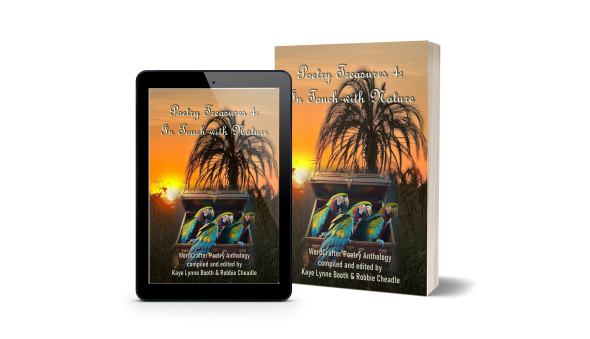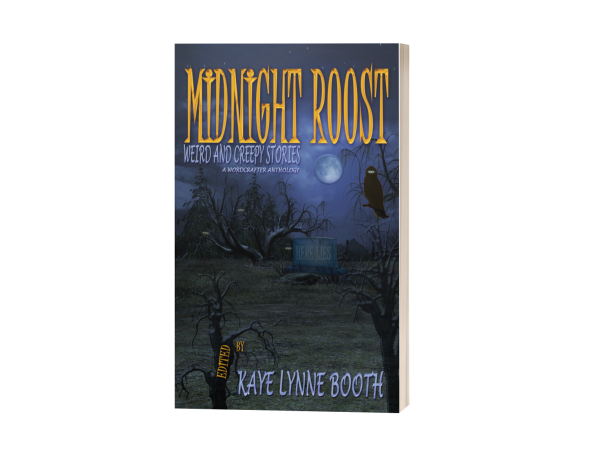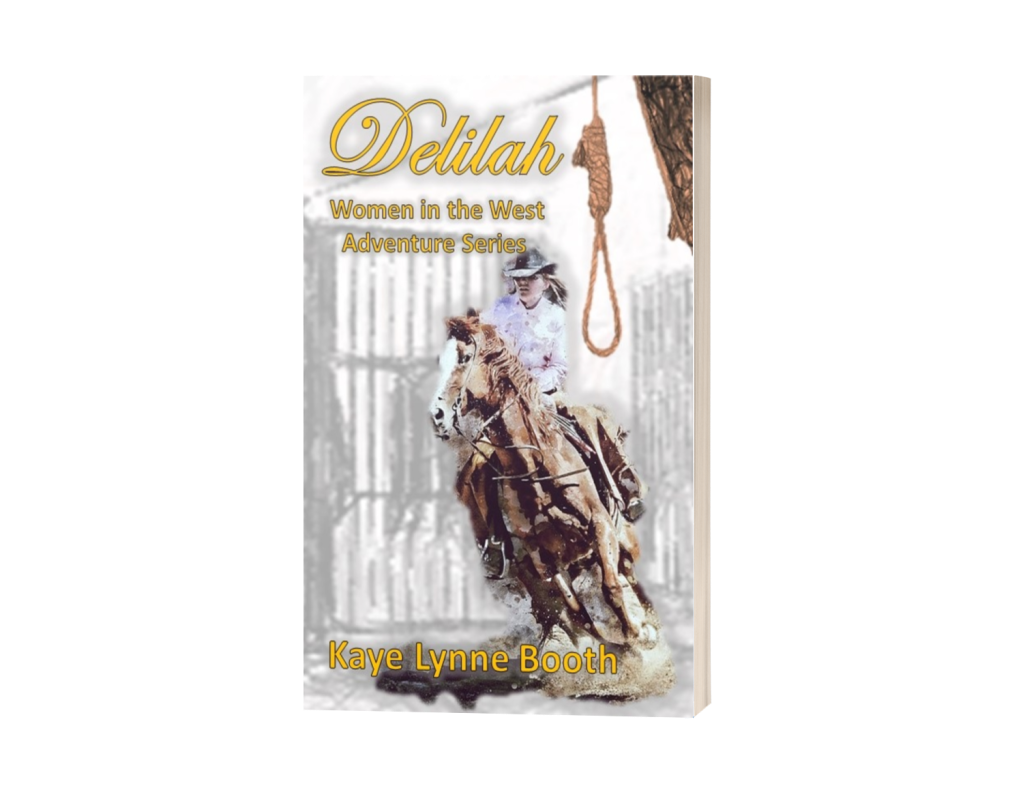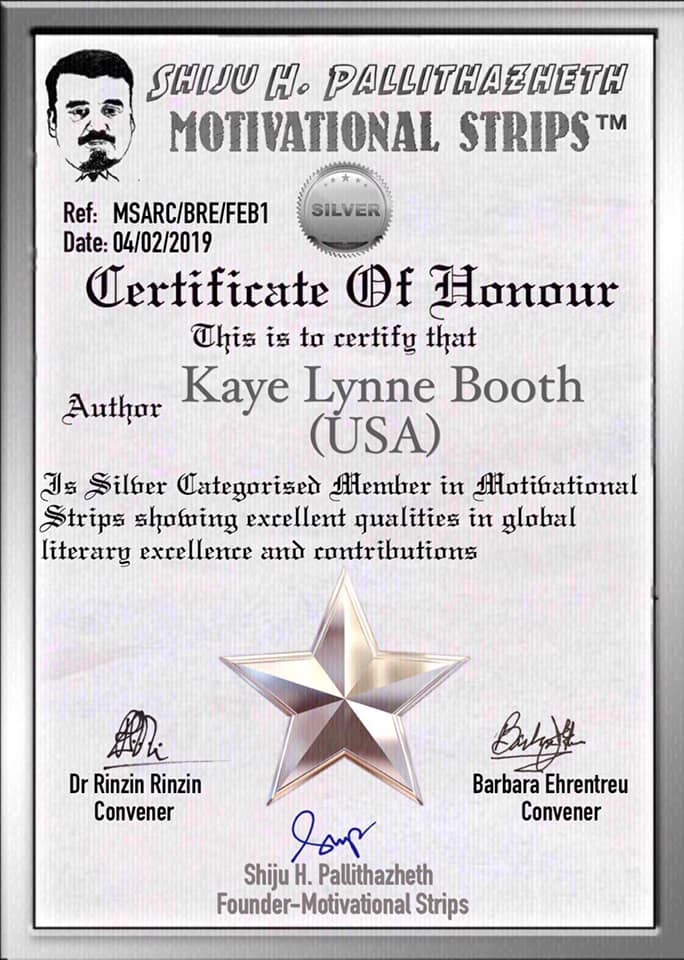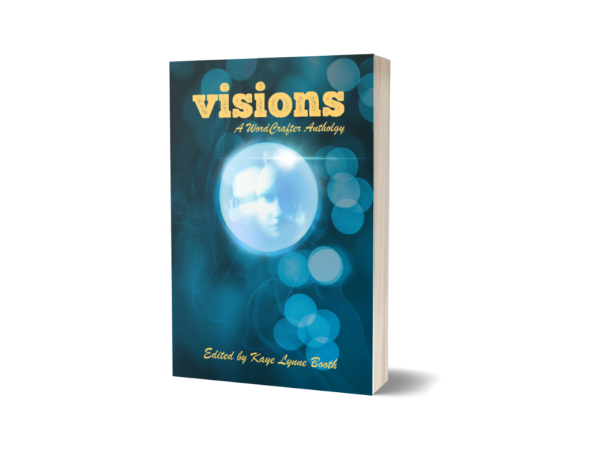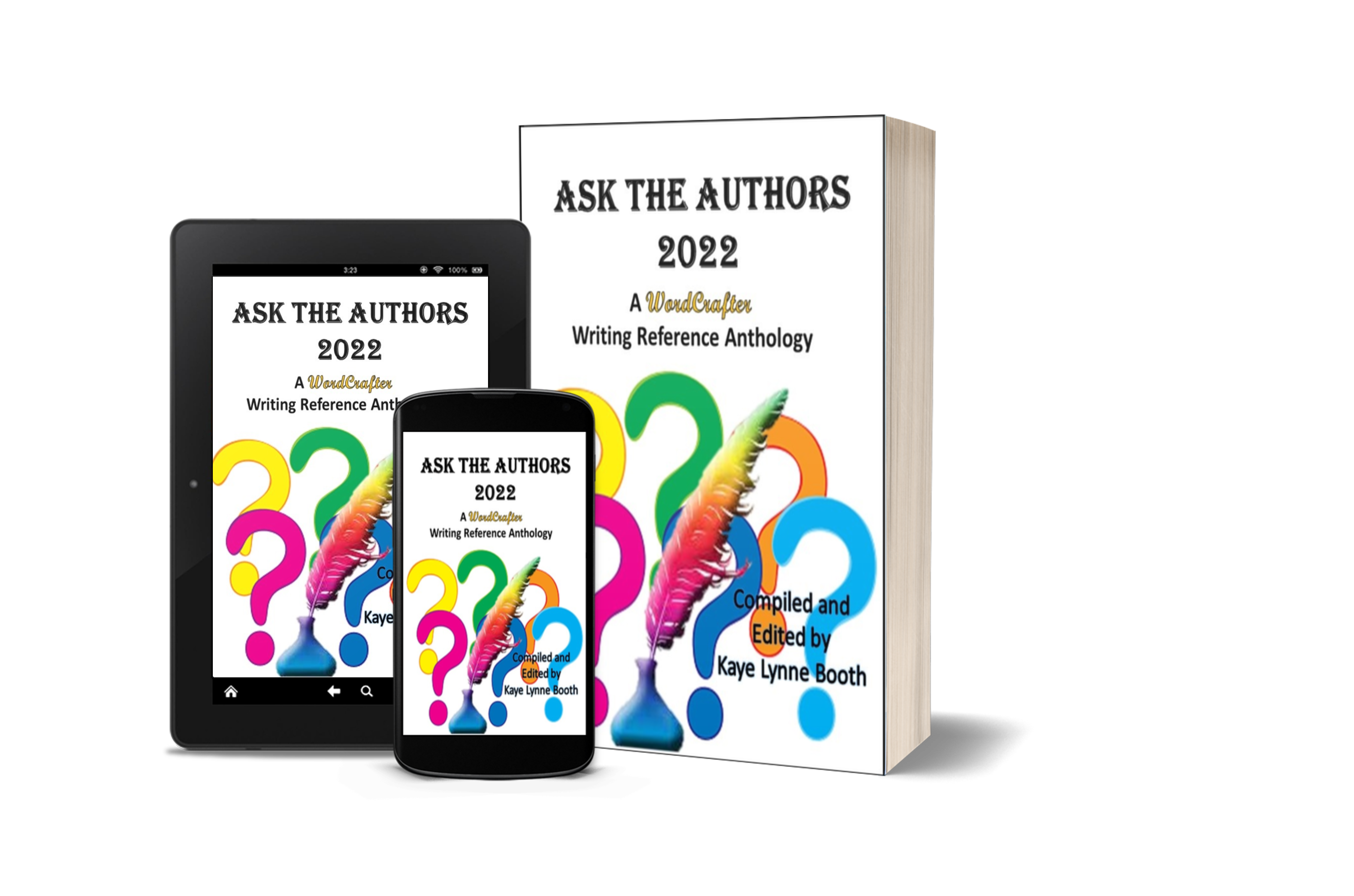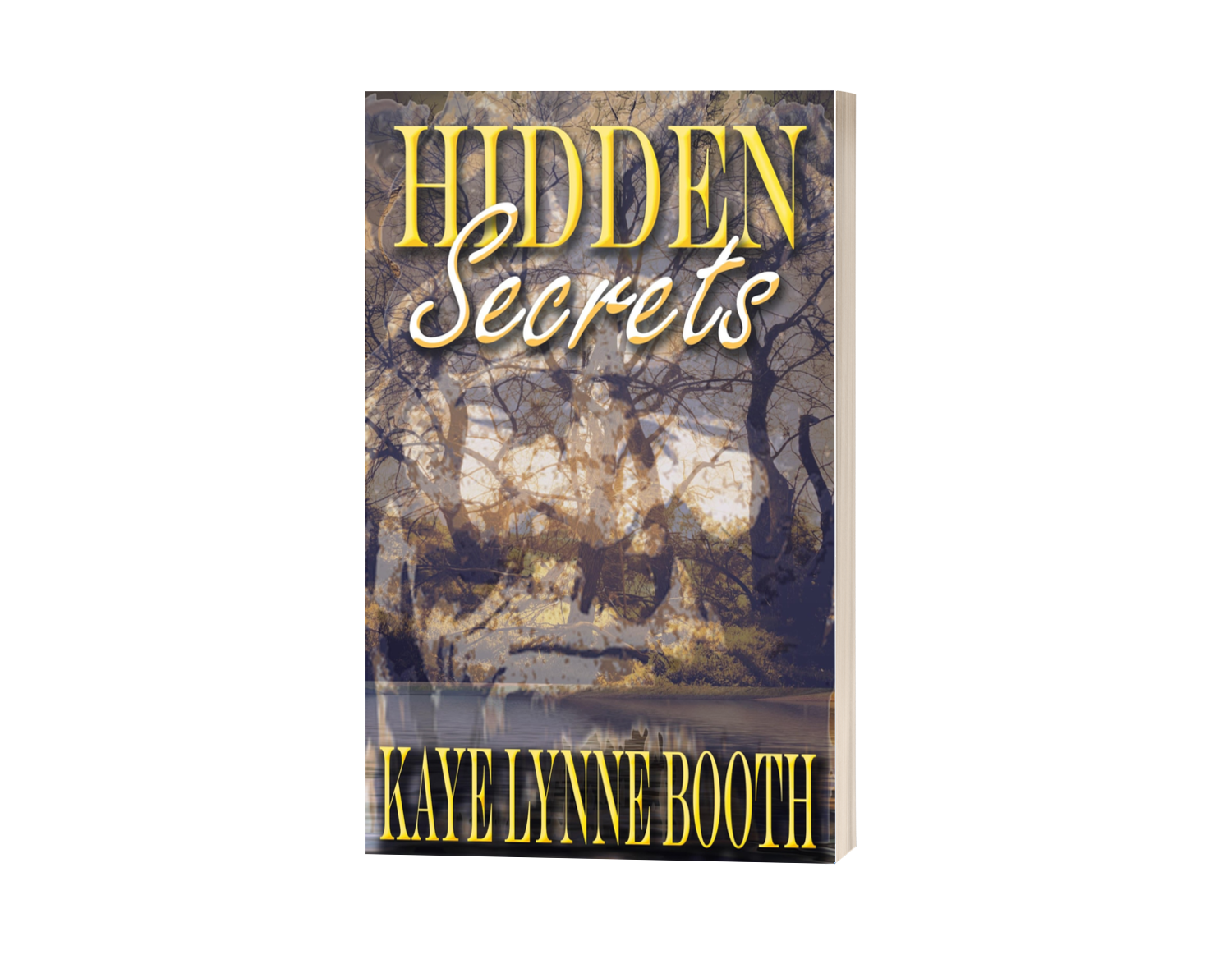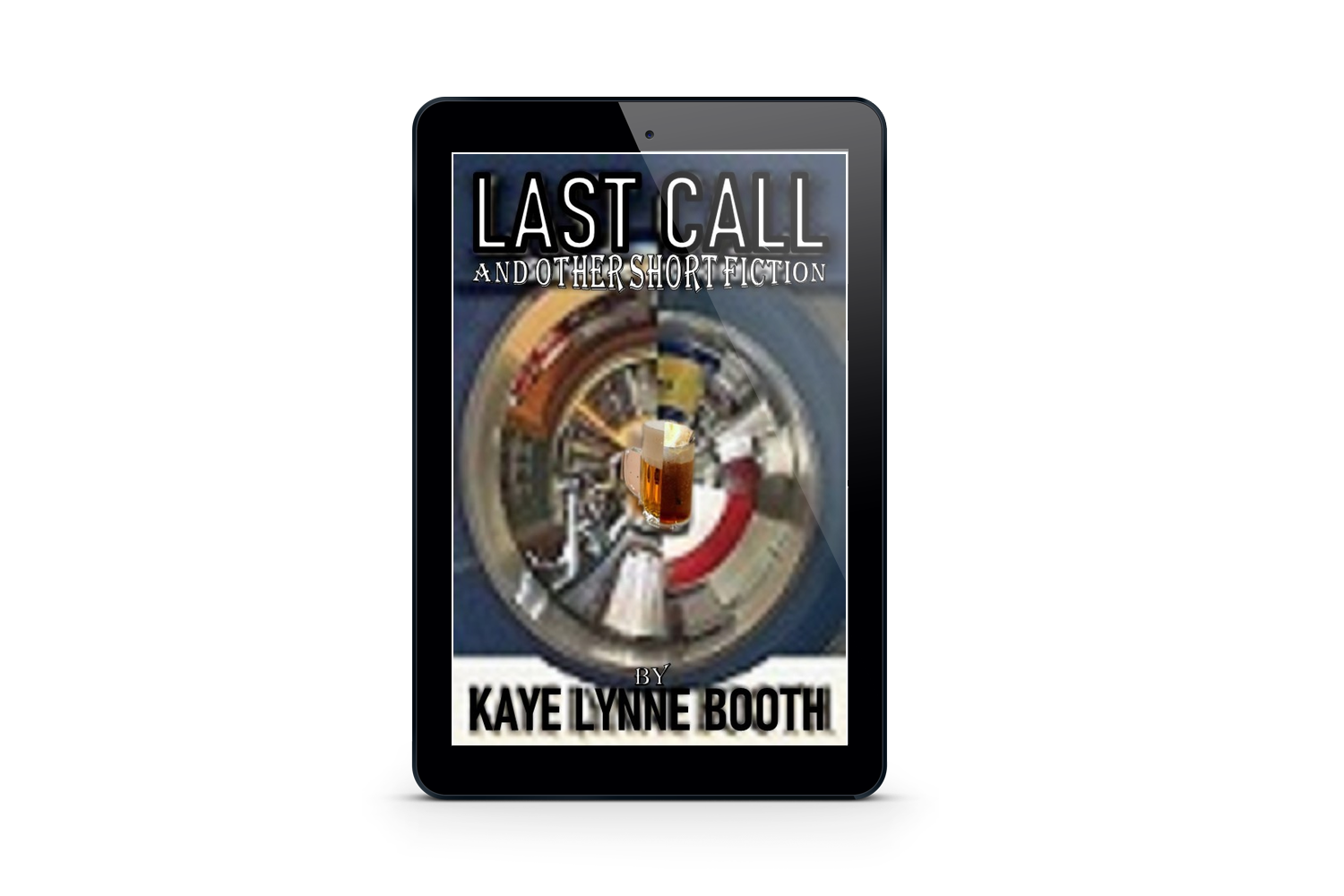Treasuring Poetry – Michael Cheadle talks about poetry and a review
Posted: May 15, 2024 Filed under: Books, Collection, Interview, Poetry, Treasuring Poetry | Tags: Interview, Michael Cheadle, Poetry, Robbie Cheadle, Square Peg in a Round Hole, Treasuring Poetry, Writing to be Read 51 Comments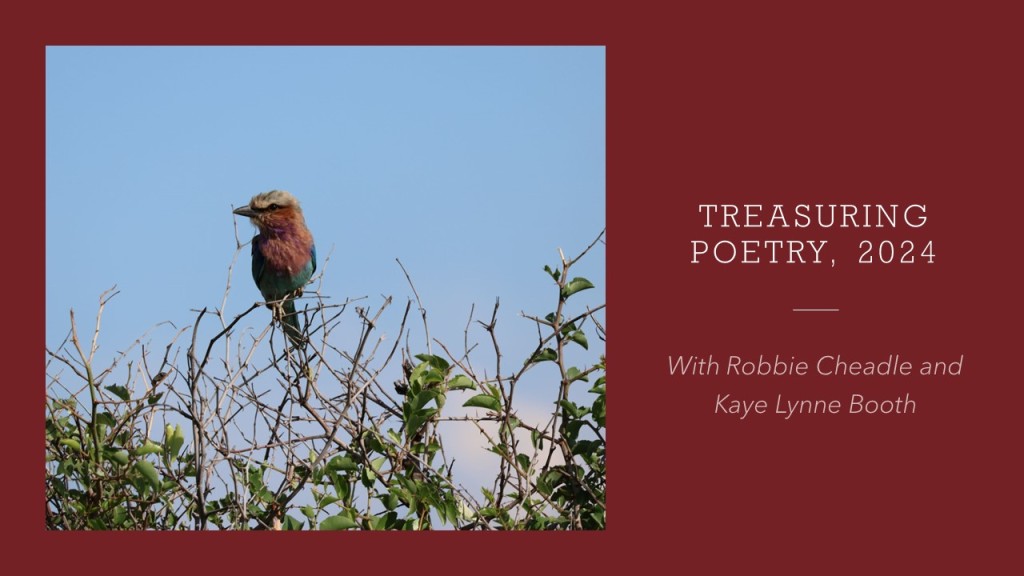
What is your favourite style of poetry to read?
I like freestyle. This is the style of most of the poems I have learned about at school and it is my favourite style to write. I like the freedom and lack of specific structure of freestyle poetry. It must have rhythm, but other than that, there are few restrictions with freestyle poetry.
What is your favourite poem in your favourite style to read?
Eating Poetry by Mark Strand was introduced to me this year by my English teacher. At first, I didn’t really understand the poem but after reading it a few times, it captured my imagination. I like the surreal and unusual style of this poem.
Eating Poetry by Mark Strand
Ink runs from the corners of my mouth.
There is no happiness like mine.
I have been eating poetry.
***
The librarian does not believe what she sees.
Her eyes are sad
and she walks with her hands in her dress.
***
The poems are gone.
The light is dim.
The dogs are on the basement stairs and coming up.
***
Their eyeballs roll,
their blond legs burn like brush.
The poor librarian begins to stamp her feet and weep.
***
She does not understand.
When I get on my knees and lick her hand,
she screams.
***
I am a new man.
I snarl at her and bark.
I romp with joy in the bookish dark.
Do you like listening to poetry?
I don’t listen to poetry outside of school. I do love music and I think that songs are a form of poetry. The poems are just set to music. I love music and I’m learning to play the electric guitar.
This is my favourite song:
What is your favourite of your own poems in your favourite style?
I have nine poems published in Square Peg in a Round Hole, poetry, art & creativity by Robbie Cheadle. I have written a few poems subsequently, but not that many as I am studying art at school. It takes up a lot of my time. I like my poem, Devil’s Thoughts in the collection because the setting is one of my photographs. I enjoy photographing roads and cloud formations.

Devil’s Thoughts by Michael Cheadle
Panic and pain
Consume everything
I attempt to speak up
Trying again and again
To call for help
The only response
Is the devil’s reply
Shouting loudly
“Come to me, I can stop it all.
I can make you smile.”
The temptation
I endeavour to resist
The world may be crumbling
It is an endless pit
But it is a road I must traverse
About Square Peg in a Round Hole, poetry, art & creativity by Robbie Cheadle

How to stay positive in a negative world!
Square Peg in a Round Hole is a collection of poetry, art, and photography. The section, Life, demonstrates the author’s perceptions of life in a fast-moving world filled with work, ill-health, and other demands. The other sections illustrate how the poet makes use of writing poetry, creating art, and photography to keep smiling.
Amazon US purchase link: https://www.amazon.com/Square-Peg-Round-Hole-Creativity-ebook/dp/B0CW1H3SQV
A 5-star Amazon review for Square Peg in a Round Hole
Gwendolyn Plano says:
This collection of poetry, photography, paintings, and reflections grabbed my attention immediately. So much so that I devoured it in one sitting. The questions raised, the sorrows expressed, the hopes shared — all resonated with my own. For example, the tanka ‘Voice of Reason’ addresses current situations:
Leaders have the power
To direct others’ footsteps
Don’t blindly follow
Like a lemming to the sea
Let the voice of reason speak
This is a book worth savoring. The author’s brilliance is everywhere present. As an added dimension, Michael Cheadle’s heartbreaking poems bring the collection to a close. Bravo to both Robbie and Michael!
About Michael Cheadle

Michael Cheadle is a student in Johannesburg, South Africa. Together with Robbie Cheadle, Michael has co-authored eleven books in the Sir Chocolate books series, the first book in the Southern African Safari Adventures series, and Haunted Halloween Holiday.
Michael also has nine poems and a charcoal artwork in a poetry collection, Square Peg in a Round Hole.
You can find Michael Cheadle’s artwork and all his books on Robbie Cheadle’s website here: https://www.robbiecheadle.co.za/
About Robbie Cheadle
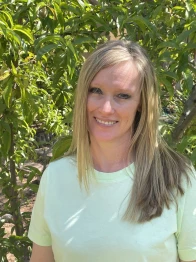
Award-winning, bestselling author, Robbie Cheadle, has published fourteen children’s books and three poetry books. Her work also features in several poetry and short story anthologies.
Robbie also has two novels published under the name of Roberta Eaton Cheadle and has horror, paranormal, and fantasy short stories featured in several anthologies under this name.
The eleven Sir Chocolate children’s picture books, co-authored by Robbie and Michael Cheadle, are written in sweet, short rhymes which are easy for young children to follow and are illustrated with pictures of delicious cakes and cake decorations. Each book also includes simple recipes or biscuit art directions which children can make under adult supervision.
Robbie and Michael Cheadle have recently launched a new series of children’s books called Southern African Safari Adventures. The first book, Neema the Misfit Giraffe is now available from Amazon.
Robbie’s blog includes recipes, fondant and cake artwork, poetry, and book reviews. https://robbiesinspiration.wordpress.com/
_________________________________________
Want to be sure not to miss any of Robbie’s “Treasuring Poetry” segments? Subscribe to Writing to be Read for e-mail notifications whenever new content is posted or follow WtbR on WordPress. If you found it interesting or entertaining, please share.
Growing Bookworms – Age groups for children’s books: Middle-grade Fiction #growingbookworms #childrensfiction
Posted: May 8, 2024 Filed under: Children's Books, Growing Bookworms | Tags: Children's Books, Growing Bookworms, middlegrade, Robbie Cheadle, Writing to be Read 38 Comments
What is middle-grade fiction
Middle-grade fiction is aimed at readers aged between 8 and 12 years old. This genre is intended to be a bridge between simple children’s stories and stories that are more emotionally or thematically advanced. Importantly, middle-grade is not a genre, it is an age-based categorisation. Middle-grade fiction comes in all sorts of genres.
Books falling into the middle-fiction category are usually 30,000 to 50,000 words in length and are frequently in the third person point of view. The protagonist is usually between the ages of 10 and 13 years old and there is no graphic violence, sexuality or swearing.
While middle-grade stories can include heavy topics such as death, illness, mental illness, and war, the stories generally focus on dynamics between family and friends and don’t go into introspective discoveries and or social dynamics in the greater world.
Famous examples of midde-grade fiction
Holes by Louis Sachar
An excellent example of a complex middle-grade book is Holes by Louis Sachar. The main themes of Holes are: The power of fate to determine events; the benefits of friendship; the destructive nature of cruelty; and the importance of history in every day life.

This is the Amazon US blurb for Holes:
Stanley Yelnats’ family has a history of bad luck, so when a miscarriage of justice sends him to Camp Green Lake Juvenile Detention Centre (which isn’t green and doesn’t have a lake), it’s not exactly a surprise.
Every day he and the other inmates are told to dig a hole each, five foot wide by five foot deep, reporting anything they find. Why? The evil warden claims that it builds character, but this is a lie. It’s up to Stanley to dig up the truth.
A masterpiece of storytelling that combines sly humour with irresistible, page-turning writing.
You can purchase Holes from Amazon US here: https://www.amazon.com/Holes-Louis-Sachar-ebook
Roald Dahl’s books
Roald Dahl is synonymous with childhood in my mind. I absolutely loved his dark and quirky books when I was a young reader. I read these books to my two youngest sisters and also to both my sons. When I got the chance, I also read them to my nieces and nephews. I am a Dahl fan!
These are a few wonderful quotes from Roald Dahl’s books:
“A person is a fool to become a writer. His only compensation is absolute freedom. He has no master except his own soul, and that, I am sure, is why he does it.” from Boy: Tale of Childhood
“So please, oh please, we beg, we pray, Go throw your TV set away, And in its place, you can install A lovely bookshelf on the wall. Then fill the shelves with lots of books.” from Charlie and the Chocolate Factory
“Well, maybe it started that way. As a dream, but doesn’t everything.” from James and the Giant Peach (this is my favourite as it includes an assortment of giant bugs including Miss Spider).
You can find all of Roald Dahl’s books on Amazon US here: https://www.amazon.com/stores/Roald-Dahl/author/B000AQ0WGQ
Roald Dahl inspired a few of my fondant creations:

Toni Pike is a modern Indie author who has captured the same quirky and darkly humorous style of writing as Roald Dahl. You can find all of Toni Pike’s books here: https://www.amazon.com/stores/Toni-Pike/author/B009I70E8Y
Middle-grade series
There are several excellent middle-grade series.
My sons both loved Rick Riordan’s Percy Jackson. The first book in the series in Percy Jackson and the Lightning Thief. The hero, Percy Jackson, is half human and half Greek god. A quote from the Amazon blurb: I was just a normal kid, going to school, playing basketball, skateboarding. The usual. Until I accidentally vaporized my maths teacher. Now I spend my time battling monsters and generally trying to stay alive.
Talented Indie children’s author, Darlene Forster, has a wonderful series of middle-age books featuring a young girl, Amanda, who loves travelling to different countries. Everywhere Amanda goes, she falls into an adventure.
You can find all of Darlene’s Amanda books on Amazon US here: https://www.amazon.com/stores/Darlene-Foster/author/B003XGQPHA
Some writers start out as middle-grade writers and their targeted age group increases as their characters age. A famous example of such a writer is JK Rowling. The first two Harry Potter books were middle-grade stories. As her characters grew older, the books became more complicated, darker and much longer.
You can find the complete collection of Harry Potter books here: https://www.amazon.com/Harry-Potter-Complete-Collection-1-7-ebook/dp/B01B3DKROQ
Of course, if anyone reading this post hasn’t read Harry Potter I’ll eat Sir Chocolate – haha!

About Robbie Cheadle

Award-winning, bestselling author, Robbie Cheadle, has published fifteen children’s book and three poetry books. Her work has also appeared in poetry and short story anthologies.
Robbie also has two novels published under the name of Roberta Eaton Cheadle and has horror, paranormal, and fantasy short stories featured in several anthologies under this name.
The eleven Sir Chocolate children’s picture books, co-authored by Robbie and Michael Cheadle, are written in sweet, short rhymes which are easy for young children to follow and are illustrated with pictures of delicious cakes and cake decorations. Each book also includes simple recipes or biscuit art directions which children can make under adult supervision.
Robbie and Michael’s new Southern African Safari Adventures series is aimed at teaching young children about Southern African wildlife in a fun and entertaining way. Each book contains a rhyming verse story about a particular animal, as well as illustrations by Robbie Cheadle, photographs and links to video footage about that animal.
Robbie’s blog includes recipes, fondant and cake artwork, poetry, and book reviews. https://robbiesinspiration.wordpress.com/
_____________________________________________
Want to be sure not to miss any of Robbie’s “Growing Bookworms” segments? Subscribe to Writing to be Read for e-mail notifications whenever new content is posted or follow WtbR on WordPress. If you found it interesting or entertaining, please share.
Treasuring Poetry – Meet prolific poet, Ivor Steven, and a review #poetry #poetrycommunity #TreasuringPoetry
Posted: April 17, 2024 Filed under: Book Review, Books, Collection, Interview, Poetry, Review, Treasuring Poetry | Tags: Book Reveiw, Ivor Steven, Poetry, Robbie Cheadle, Treasuring Poetry, Until Eyes Hear Sound, Writing to be Read 53 Comments
My April Treasuring Poetry guest is talented and prolific poet, Ivor Steven. Please enjoy his thoughts about poetry and some of his favourite poems.
What is your favourite style of poetry to read?
Oh, there are so many styles of poetry that I like. In my personal library I have poetry books by Leonard Cohen, William B Yeats, Walt Whitman, Emily Dickinson, John Keats, Henry Lawson, Banjo Paterson, and Rupi Kaur, and of course numerous other local poets. My selections are of a range of styles and very eclectic, however, my favourite poetry style is rhythmical freestyle poems.
What is your favourite poem in your favourite style to read?
Since I was a teenager, I have been an avid follower of Leonard Cohen’s writings, and he has had a huge influence on the way I draft my poems. One of my favourite poems of his is “Avalanche”.
“Avalanche“
Well, I stepped into an avalanche,
it covered up my soul;
when I am not this hunchback that you see,
I sleep beneath the golden hill.
You who wish to conquer pain,
you must learn, learn to serve me well.
You strike my side by accident
as you go down for your gold.
The cripple here that you clothe, and feed
is neither starved nor cold;
he does not ask for your company,
not at the centre, the centre of the world.
When I am on a pedestal,
you did not raise me there.
Your laws do not compel me
to kneel grotesque and bare.
I myself am the pedestal
for this ugly hump at which you stare.
You who wish to conquer pain,
you must learn what makes me kind;
the crumbs of love that you offer me,
they’re the crumbs I’ve left behind.
Your pain is no credential here,
it’s just the shadow, shadow of my wound.
I have begun to long for you,
I who have no greed;
I have begun to ask for you,
I who have no need.
You say you’ve gone away from me,
but I can feel you when you breathe.
Do not dress in those rags for me,
I know you are not poor;
you don’t love me quite so fiercely now
when you know that you are not sure,
it is your turn, beloved,
it is your flesh that I wear.
What is your favourite style of poetry to write? Why?
I must say I like writing Haiku, Tanka, musettes, and other forms of short poems. However, I only started writing poetry after I had suffered a semiserious stroke in 2000. During my rehab, the speech therapist encouraged me to write rhyming words to help regain my cognitive abilities. I developed a knack for rhyming words and from there my writing knowledge gradually expanded. With my restricted thought process, the rhythmical Freestyle Poems were an uncomplicated style for me to follow and I kept improving on my newfound journey into the world of poetry.
What is your favourite of your own poems in your favourite style?
Oh gosh, I have written nearly two thousand poems over the past twenty years, my favourite one is from my first book “Tullawalla”, I wrote the poem in Philadelphia while visiting my cousins in 2019. The trip to America was only two months after my 2nd and 3rd strokes, and the journey was truly a “dream come true”.
Dreams of The Heart
I cannot walk the continents
Like the intrepid Marco Polo
But my feet have felt the sands of time
Pass between my toes
I have not sailed the high seas
Like the courageous Christopher Columbus
But my body has bathed
In an ocean full of kind hearts I am yet to fly in space
Like the brave Neil Armstrong
But I have reached for the stars
And touched my soul’s dreams
How do you promote your poetry and poetry books?
I promote my poetry and books via my WordPress website, and social media sites: Instagram. Facebook. Thread, and a new website Medium. Also, I am an appointed writer for the online Coffee House Writers magazine (America), and they allow me to promote my Books on their members chat-site. I am a member the Geelong Writers Inc, who have Monthly social gatherings where I can sell my books. I frequent several local cafes, at which I am allowed to display and sell my books. I regularly attend local Arts Markets and I have had Book Stalls at nearby book festivals, the most recent being the prestigious Clunes Booktown Festival.
>> Clunes Booktown Festival – For the love of story
You can find out more about Ivor Steven on his blog here: https://ivorplumberpoet.press/about/
My review of Until Eyes Hear Sound
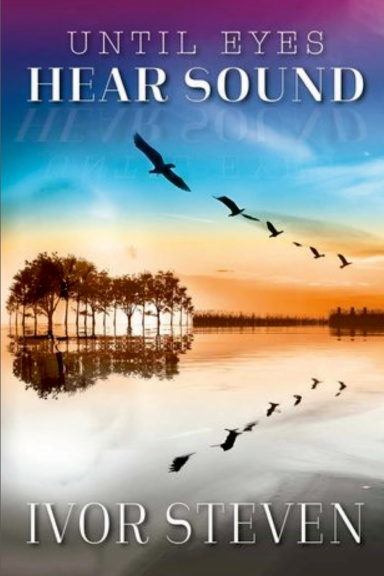
Available from Lulu.com here: https://www.lulu.com/search?contributor=Ivor+Steven&adult_audience_rating=00
and Jaymah Press here: https://www.jaymahpress.com.au/product-page/until-eyes-hear-sound
Until Eyes Hear Sound is a wonderful collection full of impactful poems about numerous important issues humanity faces as a collective, as well as the beauty of our natural world.
The book is divided up into ten chapters as follows: Little Creatures and Birds; Planet Earth, Nature and Existence; The New World? The Same Universe; Observations – “Until Eyes Hear Sound”; War! Without Peace?; Memories and Rhymes; Poetry in Slow Motion; Humour, Fantasy, Faeries, and Weird; and Short Poems, Haiku, Senryu, Tanka, and Others. Each section shares a smaller collection of poems that highlight the best and worst of that category. The poems are written in a mixture of freestyle and rhyming verse and are easy to read and vivid in their description.
The following are a few lines from some of the poems I related to the most in the collection:
“Raw rain is tumbling across town
Mother Nature’s roaring sound
Amplifies her tears slapping the ground
As her dark clouds wrinkle into a frown”
from She Knows
“Behind every mask there is a weathered face
Behind every face old lines survive in place
Behind every place memories live with grace”
from My World, My Thoughts
“arriving
via the cemetery gate
holding her flowers
hands quivering
heart quickens …
“leaving
via the cemetery path
renewing goodbyes
crying silently
breathing slowly”
from Arriving and Leaving, Visiting Her. This was my favourite poem in the collection.
A beautiful collection.
About Robbie Cheadle

Award-winning, bestselling author, Robbie Cheadle, has published fourteen children’s books and three poetry books. Her work also features in several poetry and short story anthologies.
Robbie also has two novels published under the name of Roberta Eaton Cheadle and has horror, paranormal, and fantasy short stories featured in several anthologies under this name.
The eleven Sir Chocolate children’s picture books, co-authored by Robbie and Michael Cheadle, are written in sweet, short rhymes which are easy for young children to follow and are illustrated with pictures of delicious cakes and cake decorations. Each book also includes simple recipes or biscuit art directions which children can make under adult supervision.
Robbie and Michael Cheadle have recently launched a new series of children’s books called Southern African Safari Adventures. The first book, Neema the Misfit Giraffe is now available from Amazon.
Robbie’s blog includes recipes, fondant and cake artwork, poetry, and book reviews. https://robbiesinspiration.wordpress.com/
Growing Bookworms – Age groups for children’s books: Early Readers #GrowingBookworms #childrensfiction
Posted: April 10, 2024 Filed under: Books, Children's Books, Fiction, Growing Bookworms, Interactive Books | Tags: Children's Books, Growing Bookworms, Robbie Cheadle, Writing to be Read 47 Comments
Encouraging children to read is very important. Reading helps children build language skills, learn about the larger world and also, develop empathy and emotional awareness. Parents reading to their children is one of the greatest gifts you can give.
In order to ensure the children are fully engaged in the book and story, it is important to read age appropriate books. If a story is to complex for a child, he/she will not fully engage and will lose interest. If the book is to easy for the child, he/she will not learn anything new and there will be no progression.
This is a summary of the different age groups for children’s books:
Books for toddlers
These books are aimed at children up to approximately 3 years old. They are printed on hard cardboard for durability and usually contain interesting pictures with accompanying words and/or phrases.
Early picture books
The age group for these books is 2 to 5 years old. These books are driven by colourful illustrations and often teach a life lesson about friendship, empathy, and kindness. They help teach children the social skills they need for school. The text is simple but stimulating.
Picture books
Picture books are aimed at children aged between 5 and 8 years old. These books contain a full story, sometimes told in rhyming verse, and contained beautiful pictures and illustrations to maintain interest and aid reading. These books are usually between 600 to 1,000 words in length and often include educational material.
This is the target market for most of my children’s books which are interactive and also include recipes (Sir Chocolate books), activities for children (Sir Chocolate Highdays and Holidays books series) and wildlife facts, photographs and wildlife videos (Southern African Safari Adventures Books).


First chapter books and graphic novels
These books are aimed at children who have learned to read on their own. They are usually between 3,000 and 5,000 words in length and contain a more complex story line. While these books still contain illustrations, there is more text than pictures in the book. The storylines often still adhere to the concepts of acceptance, friendship, and sharing. These books can also expand into more complex areas such as nature conservation and exploration.
Michael and my book, Haunted Halloween Holiday, fits into this category. This story’s primary messaging is around acceptance and diversity. The family unit around which the story revolves comprises of Count Sugular, a vampire, Witch Honey, their baby, Baby Howler, who is a banshee, and Skelly, Count Sugular’s brother who is a skeleton.
I created a short YT video story called Haunted Halloween Safari which uses some of the characters from Haunted Halloween Holiday and gives an idea of writing and creative level of this type of book.
About Robbie Cheadle

Award-winning, bestselling author, Robbie Cheadle, has published fifteen children’s book and three poetry books. Her work has also appeared in poetry and short story anthologies.
Robbie also has two novels published under the name of Roberta Eaton Cheadle and has horror, paranormal, and fantasy short stories featured in several anthologies under this name.
The eleven Sir Chocolate children’s picture books, co-authored by Robbie and Michael Cheadle, are written in sweet, short rhymes which are easy for young children to follow and are illustrated with pictures of delicious cakes and cake decorations. Each book also includes simple recipes or biscuit art directions which children can make under adult supervision.
Robbie and Michael’s new Southern African Safari Adventures series is aimed at teaching young children about Southern African wildlife in a fun and entertaining way. Each book contains a rhyming verse story about a particular animal, as well as illustrations by Robbie Cheadle, photographs and links to video footage about that animal.
Robbie’s blog includes recipes, fondant and cake artwork, poetry, and book reviews. https://robbiesinspiration.wordpress.com/
_____________________________________________
Want to be sure not to miss any of Robbie’s “Growing Bookworms” segments? Subscribe to Writing to be Read for e-mail notifications whenever new content is posted or follow WtbR on WordPress. If you found it interesting or entertaining, please share.
Treasuring Poetry – Meet poet and novelist, Jude Itakali, and a review
Posted: March 20, 2024 Filed under: Uncategorized 43 Comments
Welcome to fabulous poet and novelist, Jude Itakali. As a fellow African, Jude is from Uganda, I always feel we have a lot in common and that our love of this continent, its wildlife, and its people, shows through in our writing. Welcome Jude.
What is your favourite style of poetry to read?
It’s so difficult to choose. I love different forms for different reasons and employ them depending on the purpose.
However, if I had to choose one, I’d go with “haibun”. The transition from vivid verbiage and concise prose, to a juxtaposed haiku which most often provides the ‘wow’ moment, really hits the spot for me. So yeah, haibun it is.
What is your favourite poem in your favourite style to read?
It’s near impossible to pick a favourite as I read poetry in a cocktail of forms and never really remember which haibun or sonnet was my favourite. But I’ll include two haibuns that I read recently that really got me:
Susan B. Auld
Directed by reception I wait. But not in the same room where I once sat with other pregnant women, where we spoke soft conversations, smiled in recognition, crocheted pastel blankets, read parenting magazines, made lists of things to buy, to do. There is no baby now
winter rain
an empty nest
beneath the tree
Margaret Domaus
His fingers – are what I can’t stop conjuring. Long and slender nails trim and clean, a baker’s hands lightly dusted with flour.
snowbound
the underground pulse
of hot springs
What is your favourite style of poetry to write? Why?
Another tough choice. Ask me on a different day and I’ll likely have a different answer. But Afro now, I’ll go with ‘etheree’. I love its descending/ascending order of syllables depending on whether to write a reverse etheree or not. This is because writing in this form enables me to expand my musing upon a single word or simple thought, or else to comprehend complex musings and reduce them to a particular word or single thought.
What is your favourite of your own poems in your favourite style?
My favourite amongst the haibun I’ve written is the most difficult question I have to answer here. It’s impossible to choose amongst my babies. I write all of them with so much emotion. Because of this, I’ll simply pick the most recent haibun from my blog. It’s a little bit longer than a single paragraph and haiku, so I’ll include the link instead:
How do you promote your poetry and poetry books?
Not very well I’m afraid. Promotion is a work in progress. For now, I write for my blog, twitter, and do creative reels on my Instagram. I’m still trying to figure out the self-promotion thing, so any help is absolutely welcome.
Thank you so much for listening to me mumbling.
My review of Jude’s latest book, Dark Butterflies: Poetry and short stories of mental health

Dark Butterflies is a deep and compelling exploration of the darker side of life. Itakali uses poems and short stories to expose the mental health issues that lie hidden under the shiny surface of societies. Some of the poems and short prose pieces interspersed with syllabic poetry, are told from two or even multiple points of view and experiences, which I really liked. One of my favourite prose pieces is A Tale of Two Beauties which is truly heart warming.
A few of the themes explored in this book, with a relevant quote, are as follows:
Child abuse – ‘You carry the mark of a black kiss,
A bruise etched into your every wish’ from Child fleeing light
Loss of hope – ‘All wonder diminishes in their reflection
The light that once sparked is gone’ from Unseen
Split personalities – ‘By day she is Anne
By night she is Liz’ from Split
Drug abuse – ‘Syringe on the cracked floor
Pills to numb the stench of failure’ from Dark themes we do not see
Loneliness – ‘In the dark hour before dawn, I scale the precipice
Of loneliness. If only for a glimpse of a dream.’
Each of the harrowing mental illnesses or seemingly inescapable circumstances, is handled with compassion and understanding by the poet.
This is a beautiful collection that opens the reader’s eyes to the places in life where the shadows have ownership and trauma is the dwellers daily companion.
You can purchase Dark Butterflies from Amazon US here: https://www.amazon.com/Dark-Butterflies-Poetry-stories-mental-ebook/dp/B0CJ54YLST
Jude also has another poetry book and two novels in the Realms of the Mist series. You can find all of Jude’s books here: https://www.amazon.com/stores/Jude-Itakali/author/B093BJSYTB
About Jude Itakali

Jude Itakali is a poet, writer and fiction author from the suburbs of Kampala, Uganda.
Itakali never liked sharing his books as a child. That has changed, especially since he started writing his own.
A lifelong obsession with ‘the good story’ evoked his personal phrase, “Reality is all around us, but fantasy is a part of us.” Egged on by a conniving appetite to consume works across genres, Itakali crafts the compelling themes and rounded characters in his books.
When not ‘life-ing’ or pursuing infrequent exercise routines, you can find Itakali writing fiction in a small cubicle, or under a tree, furnishing his website, Tales told different, with life epiphanies, ponderous prose, and poetry.
About Robbie Cheadle

Award-winning, bestselling author, Robbie Cheadle, has published fourteen children’s books and three poetry books. Her work also features in several poetry and short story anthologies.
Robbie also has two novels published under the name of Roberta Eaton Cheadle and has horror, paranormal, and fantasy short stories featured in several anthologies under this name.
The eleven Sir Chocolate children’s picture books, co-authored by Robbie and Michael Cheadle, are written in sweet, short rhymes which are easy for young children to follow and are illustrated with pictures of delicious cakes and cake decorations. Each book also includes simple recipes or biscuit art directions which children can make under adult supervision.
Robbie and Michael Cheadle have recently launched a new series of children’s books called Southern African Safari Adventures. The first book, Neema the Misfit Giraffe is now available from Amazon.
Robbie’s blog includes recipes, fondant and cake artwork, poetry, and book reviews. https://robbiesinspiration.wordpress.com/
Growing Bookworms – Fun creations using fondant and Easter eggs #fondantart #Easter
Posted: March 13, 2024 Filed under: craft, Creative Projects, Growing Bookworms, Parenting, Teaching children | Tags: Easter Decorations, Fondant Art, Growing Bookworms, Robbie Cheadle, Writing to be Read 43 Comments
This month, I thought I would share a few ideas for making fun Easter creations using Easter eggs and fondant. Children love making things and modelling fondant is similar to modelling play dough.
I used candy coated hens eggs to make my creations but you can use any hens eggs sized Easter egg.
Step-by-step: How to make an Easter chick from fondant and an Easter egg


If you don’t have cutters, you can just cut the shapes freehand.







You can download a free PDF with these instructions here: https://robbiesinspiration.files.wordpress.com/2024/03/easter-chick.pdf
Step-by-step: How to make panda bear from fondant and an Easter egg








You can download a free PDF with these instructions here:
https://robbiesinspiration.files.wordpress.com/2024/03/panda-bear.pdf
Some other fondant and Easter egg idea – a dinosaur and a pig.


About Robbie Cheadle

Award-winning, bestselling author, Robbie Cheadle, has published fifteen children’s book and two poetry books. Her work has also appeared in poetry and short story anthologies.
Robbie also has two novels published under the name of Roberta Eaton Cheadle and has horror, paranormal, and fantasy short stories featured in several anthologies under this name.
The eleven Sir Chocolate children’s picture books, co-authored by Robbie and Michael Cheadle, are written in sweet, short rhymes which are easy for young children to follow and are illustrated with pictures of delicious cakes and cake decorations. Each book also includes simple recipes or biscuit art directions which children can make under adult supervision.
Robbie and Michael’s new Southern African Safari Adventures series is aimed at teaching young children about Southern African wildlife in a fun and entertaining way. Each book contains a rhyming verse story about a particular animal, as well as illustrations by Robbie Cheadle, photographs and links to video footage about that animal.
Robbie’s blog includes recipes, fondant and cake artwork, poetry, and book reviews. https://robbiesinspiration.wordpress.com/
Growing Bookworms – Meet prolific children’s book author, Janice Spina, and a review #GrowingBookworms #readingcommunity #childrensfiction
Posted: February 14, 2024 Filed under: Book Review, Books, Children's Books, Growing Bookworms, Interview, Review | Tags: Children's Books, Growing Bookworms, Janice Spina, Robbie Cheadle, The Case of the Sad Mischievous Ghost, Writing to be Read 50 Comments
My featured guest for this month’s Growing Bookworms post is prolific children’s book author, Janice Spina. Janice also writes for adults as J.E. Spina. This is an overview of Janice’s books:

Welcome Janice!
Tell us a bit about your books and your history of writing for children
I have always love writing poetry since a young child. When I wrote my first book, Louey the Lazy Elephant,I had to put it into rhyme. I find that children love rhyming; it keeps them interested if there is a cadence to the story.
I have 22 children’s books at present. Most of them are in rhyme and all of them carry important life lessons and family values. I first began writing for children but branched out later on into MG/PT/YA and novels for 18+. I have books about animals, dragons, and even short stories in a series of six stories per book for children ages 5-8 called Bedtime Stories for Children Series. Some of my stories in this series are based on experiences while others are purely from my overwrought imagination.
A number of your children’s books feature animals and creatures. Are these stories based on personal experience with these creatures?
Many of my children’s books are dedicated to individuals or based on imaginary animals or real-life pets that I have had in the past such as: Jerry the Crabby Crayfish – a pet blue crayfish, Lamby the Lonely Lamb – dedicated to my granddaughter and her stuffed lamby, Jesse the Precocious Polar Bear – dedicated to a little boy I met while vacationing in Aruba, Sebastian Meets Marvin the Monkey – dedicated to my youngest grandson and his stuffed monkey, Colby the Courageous Cat – dedicated to my daughter’s cat, Jeffrey the Jittery Giraffe – dedicated to a little boy who was nervous about loud noises, Clarence Henry the Hermit Crab – a pet hermit crab we once had, Lucy the Talented Toy Terrier – my first dog, The First Star – dedicated to my two children when they were young. I hope to continue to create stories to delight and entertain children for uyears to come along with my husband’s help creating the beautiful illustrations and covers.
The illustrations in your picture books are lovely. Your husband helps you with your illustrations. How much input do you put into the illustration process?
My husband, John, does do the illustrations and covers for all of my children’s books. He also creates the covers for all the other books I publish. Thank God for him! I would be lost without him.
I had to convince him to do this many years ago beginning in 2013. He told me that he wasn’t an illustrator but would give it a try after I told him how much it would cost to hire someone who was an illustrator. John has a quirky sense of humor. I do give him plenty of input about each illustration and cover, much to his chagrin. We don’t always agree on each one and therefore there are many revisions. But I am always pleased with what he creates as the finished product and give him an ample number of kudos online when I present his work.
What do you like best about writing for children?
I love writing for children. What I like best is to see children reading and enjoying my books or anyone’s books. The joy in their faces when they read or are read to is priceless. Reading is so important at an early age and not only for children but also for adults.
I love to hear from parents that their children loved one of my books and look forward to reading more. That is why I write. Receiving positive feedback in reviews is another way to make authors happy and give them an early Christmas gift.
Children – preschool to grade 3 are like sponges soaking up all kinds of things. My goal is to create entertaining and good, clean stories that are educational and full of important life lessons and family values that will stay with them for a lifetime. I hope my stories will enhance their reading experience, increase their reading levels, help to encourage them to become lovers of reading, and create readers and thinkers of tomorrow.
I also write for middle-graders, preteens, and young adults. This age group is a difficult group to entice into reading. They are always absorbed into the newest technology such as X-Box and video games, etc. I create stories in series for this age-group that have plenty of magic, mystery, suspense, wizards, ghosts, and time travel. It is a tough job but I will continue to do all I can to encourage this age-group to read.
What is your favourite children’s book or series for children?
Of all my 22 young children’s books my favorite is still, Louey the Lazy Elephant. This was the first book John illustrated. I love the crayon drawings that he created and how sweet and innocent he made Louey look. It is one of my most popular books alongside Jerry the Crabby Crayfish.
My favorite MG/PT book is Davey & Derek Junior Detectives Series Books 1-6. I had such fun creating the twins and their twin-telepathy, adventures, magic, mystery, ghosts and even time travel. Kids enjoy this series but so do adults.
I was requested by a few readers to offer a series for girls after Davey and Derek were so popular. That is why I wrote Abby & Holly Series Books 1-6. These books are enjoyed by both girls and boys.
There are more stories in my head waiting to be written down, so stay tune for many more to come for all ages.
Thank you so much, Robbie, for inviting me as a guest. I thoroughly enjoyed answering your questions and sharing a little bit about myself and my books with you and your readers.
Thank you, Janice, for being a delightful guest.

My review of The Case of the Sad Mischievous Ghost (Davey & Derrick Jr. Detectives Book 5) by Janice Spina

This is the fifth book in the Davey and Derek Junior Detective Series. Davey and Derek, who are warlocks under the tutelage of their aunt, a witch, have already solved four mysterious cases and they have gained a reputation as detectives. Abby and her cousin, Holly, seek them out at school. The two girls believe the house they have recently moved into, called the Sheridan House after its previous owner, is haunted by a ghost. They have experienced some strange happenings. Davey and Derek agree to investigate and see if they can discover the source of the strange happenings and visitations.
With some advice from their Aunt Gigi, the pair set out to determine the cause of the girls’ anxiety. They embark on an intriguing adventure including cold spots, ghostly forms, and secret tunnels.
This book was reminiscent for me of the Secret Seven adventures series by Enid Blyton which I read as a young girl. It is full of the same energy and excitement as Enid Blyton’s books, but the Davey and Derek Junior Detective Series incorporates a taste of magic and the supernatural which appeals to modern children. This series also tackles topical issues faced by 21st century youngsters. The language is appropriate for the target audience and will keep young readers engaged and interested.
I enjoyed the subtle demonstrations of respect and family values incorporated throughout this book, which send an excellent message to young readers. An enjoyable book with an interesting storyline.
You can purchase The Case of the Sad Mischievous Ghost (Davey & Derrick Jr. Detectives Book 5) from Amazon US here: https://www.amazon.com/Mischievous-Ghost-Davey-Junior-Detectives-ebook/product-reviews/B072QBJ7LC
About Janice Spina

Janice Spina is a multi-award-winning author with 45 books of which there are 22 children’s books,12 MG/PT books and two books in a YA series with four more coming over the next few years, seven novels and a short story collection for 18+ written under J.E. Spina. She is also a copy editor, blogger, book reviewer and supporter of fellow authors. Her husband, John, is her illustrator and cover creator. Watch for more books to come over the next few years.
Jance has received the following awards for her books:
10 Mom’s Choice Awards – Silver Medals, 5 Readers’ Favorite Book Awards – Silver Medal, Bronze Medal, Honorable Mention and Finalist, 21 Pinnacle Book Achievement Awards, 1 AUTHORSDB – Cover Contest, 2 Book Excellence Award Finalists, 2 Top Shelf Awards – First Place & Runner up, one Maincrest Media Award
Her logo is Jemsbooks – books for all ages! Her motto is – Reading Gives You Wings to Fly! Come soar with Jemsbooks! Happy reading!
Janice loves to hear from readers and appreciates and happily welcomes reviews.
Find Janice Spina
About Robbie Cheadle

Award-winning, bestselling author, Robbie Cheadle, has published fifteen children’s book and two poetry books. Her work has also appeared in poetry and short story anthologies.
Robbie also has two novels published under the name of Roberta Eaton Cheadle and has horror, paranormal, and fantasy short stories featured in several anthologies under this name.
The eleven Sir Chocolate children’s picture books, co-authored by Robbie and Michael Cheadle, are written in sweet, short rhymes which are easy for young children to follow and are illustrated with pictures of delicious cakes and cake decorations. Each book also includes simple recipes or biscuit art directions which children can make under adult supervision.
Robbie and Michael’s new Southern African Safari Adventures series is aimed at teaching young children about Southern African wildlife in a fun and entertaining way. Each book contains a rhyming verse story about a particular animal, as well as illustrations by Robbie Cheadle, photographs and links to video footage about that animal.
Robbie’s blog includes recipes, fondant and cake artwork, poetry, and book reviews. https://robbiesinspiration.wordpress.com/
Treasuring Poetry, 2024: Introducing the poetry of DL Mullan and a review #poetry #poetrycommunity #TreasuringPoetry
Posted: January 17, 2024 Filed under: Uncategorized 53 Comments
Today, I am pleased to introduce the poetry of poet and author, DL Mullan, as well as my review of her poetry collection, The Descent.
Over to DL Mullan
Thank you for this opportunity to discuss poetry with your audience. I am grateful to share my love of the creative arts with fellow enthusiasts.
Poetry is a part of the writing craft that is an art and science with a touch of mysticism. It is much more than words on a page. It’s a feeling, a moment… a place engaged inside of our hearts and souls that cannot be duplicated on film or in prose. The science of meter and rhyme meet the art of turning a phrase or metaphor into a memory.
Still verses express an economy of words, which speaks volumes in the empty spaces. Poetry is about reading the content, but also extracting a personal meaning. Sometimes the poet gives the reader the context, and at other times, the reader grasps a connection with the words beyond the initial texture of the composition.
To illustrate, Transcendence, from my Impetus chapbook, is one of those poems that becomes both context and connection:
Transcendence by DL Mullan
I have this little place in me
that will always be alone.
No matter the circumstances
-the outside world,
or anything given to me-
it will forever be there.
It’s that part of me you can never touch.
Never be healed. Never feel redeemed.
A place so isolated from the rest of my life,
it keeps me hungry, destitute-
it’s a fragment that lacks belief.
Don’t try to heal me, or know this place;
this longing need keeps silent.
Without this solitary eclipse that creeps into my life,
I could never find any kind of peace.
This curse cuts me deep.
Penetrates my soul.
Reveals me. Liberates me.
The one place that keeps me from being whole
-is the one place you cannot reach.
Without this lone embrace,
my life, your love would be meaningless.
A poet has to be many ideas to many people: the fire bearer of unrivaled passion; the vocabulary of a priest, lover, and devil’s advocate; the heart of a broken soul; the perseverance of an honorable warrior; the spirit of a wise sorcerer.
People enjoy poetry, because the poet expresses what they wish to hear or say. Words reach through the ages. Consoles us. Enlightens us. Reminds us of our own vulnerabilities.
The Good Morrow by John Donne
I wonder, by my troth, what thou and I
Did, till we loved? Were we not weaned till then?
But sucked on country pleasures, childishly?
Or snorted we in the Seven Sleepers’ den?
’Twas so; but this, all pleasures fancies be.
If ever any beauty I did see,
Which I desired, and got, ’twas but a dream of thee.
And now good-morrow to our waking souls,
Which watch not one another out of fear;
For love, all love of other sights controls,
And makes one little room an everywhere.
Let sea-discoverers to new worlds have gone,
Let maps to other, worlds on worlds have shown,
Let us possess one world, each hath one, and is one.
My face in thine eye, thine in mine appears,
And true plain hearts do in the faces rest;
Where can we find two better hemispheres,
Without sharp north, without declining west?
Whatever dies, was not mixed equally;
If our two loves be one, or, thou and I
Love so alike, that none do slacken, none can die.
And makes one little room an everywhere… a poet conjures such repleteness and amplifies our innate impulses, if we only have the courage to be as one with another. Do you have the courage to live forever because of love?
This poem by John Donne, The Good Morrow, began my journey into the magical realm of writing poetry. Some may believe that Edgar Allan Poe was the genesis, but the classics generated the progression toward his writings. The Descent: a darker breed of poetry is my genre inspired chapbook. Upon Reading Edgar Allan Poe is in homage to him.
Poetry seemed daunting to write at first. In adolescence, I would rewrite song lyrics for friends. It was easy to complete someone else’s rhythm and rhyme, while my original creations remained in prose. In college is where I met John Donne, and other poets throughout the ages.
In this concise form of narration, I enjoy telling stories. I have embarked on writing short thematic chapbooks as well as publishing long form poems. Effloresce: Earth Changes is my Arizona inspired chapbook, which is under expansion. Eclipse: Cloaked by Totality is a compilation of poetry about how humanity views solar and lunar eclipses from science to legend. My Long Form Poetry like Galactic Ride, Undisclosed, and The Rain take the reader on a journey beyond the norm. This past summer I published a lyrical prose short story piece called The Jonah Collector, based on seafaring lore.
To pick a favorite poem that I have written is difficult. Each poem is my favorite in its own way. I write poems which speak a universal truth. When a poem hovers at that level of mysticism, what isn’t there to love? Either lyrical stanzas or descriptive verses, every poem holds a special place within me.
Here are a few examples:
The Flower Within by DL Mullan
Hear not the silence in the new fallen snow
embankments high of drifted wonder hide
all that winter buries underneath its surface
and cocoons itself in an invisible whisper
when temperatures rise, sounds of rustling begin
from the depths of a volitional quietus
small lives will break beyond their shells
as they ascend toward the sunlit heavens
and discover how to unleash their power
by finding the flower within.
Weather by DL Mullan
Bending.
Resisting.
Opaque patterns web across the aging twilight.
Reflection meets citrine, ruby, sapphire–
Shapes stretch.
Reaching.
Touching.
The placid breeze spreads unevenly. Cumulus formations emerge.
Imagination awakens.
Building.
Sweeping.
Luminous wings expand. Gracious angel, show the world your glory.
Magnificence reigns.
Collapsing.
Fading.
Overcast merges with night. Dreams condense. The rain soaked wind roars.
The future of my lyrical rhymes is to write poetry that matters. A poet should have an authentic voice that reaches across philosophical lines. In addition to topic-based chapbooks, I create my own forms of poetry, including cinquains. I experiment with structure and form, as well as rhyme. I am interested in the challenge of creating something new and unsaid.
I would like to leave readers with a poem that combines art and science with that hint of mysticism:
Asymptote by DL Mullan
The line observed.
Its angles transparent,
Like the fanciful dream of a sliding geometry.
It’s the hint of curve that plagues me
of a slender and willful architecture.
It’s the acute optics that pitch me downward
into a maze of unrevealed canvas
unearthed and unexplained
and spreading into the heart of oblivion.
Thank you, DL Mullan, for this lovely discussion.
The Descent: a darker breed of poetry by DL Mullan
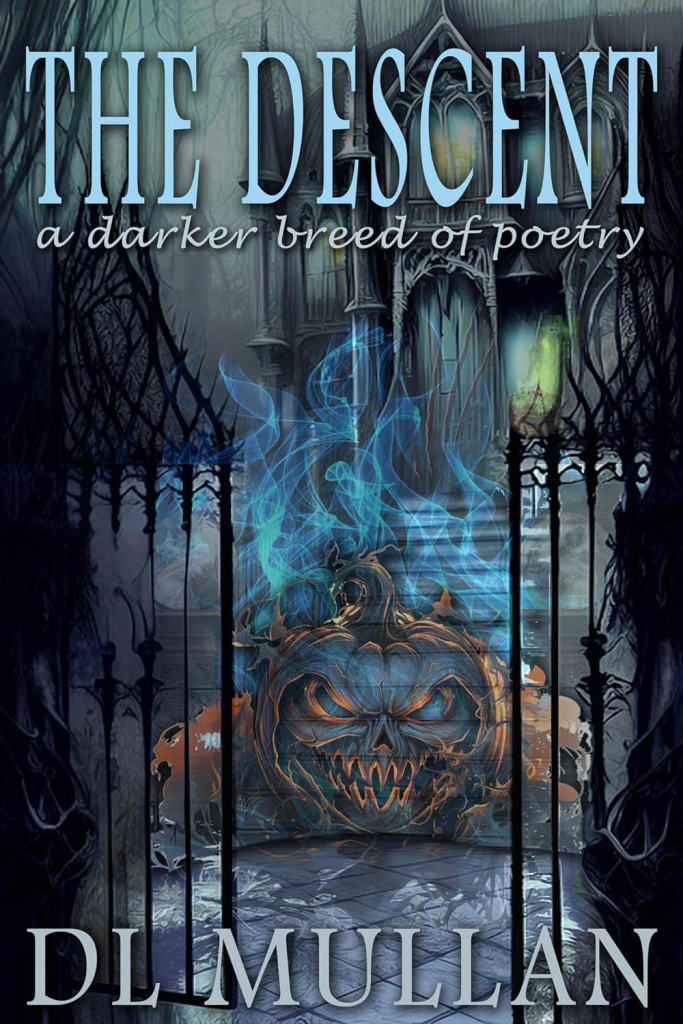
What Amazon says
This chapbook houses “a darker breed of poetry,” from paranormal research topics to metaphysical literary iterations. There is a poem for everyone who is curious about genre-inspired poetry. DL Mullan’s readers praise her work as easy to read, understand… and satisfying:
“The poem [Breathe] is as scrumptious and sensual as it is dark and deep.”
“This is a first for me. I have never read genre poetry before. I love it. Hugely imaginative and utterly unique…”
“As if Poe came right off the page. This homage is literally perfect.”
“The language and flow here is superb, the description detailed. This also has an air of mystery, almost Halloween-ish.”
“‘Until once again, night revisits his kingdom and he is resurrected.’ You know your subject. Are you reminiscing about an owl, or our immortal souls?”
“Both the language (the word choices) and the rich imagery here is exquisite! You have blended sound, description, meaning- all, in a way that shows precise crafting.”
“A lot of thought has gone into this very interesting poem, which made me think, which is what poetry should be all about, 5-star poem
My review
This collection of mysterious and slightly chilling poetry revolves around the topic of death in all it permutations: the process of dying, what it feels like to die or be dead, grievers and grieving, the afterlife, and spirits and the spirit world.
A most intriguing poem about reading Edgar Allan Poe and the influence of his works on the poet, kicks off this collection. As a fellow member of the Poe admiration club, I really enjoyed this poem and identified with the poet’s thoughts and reactions to all his magnificent poems. This is a short quote from ‘Upon Reading Edgar Allan Poe’:
“A peculiar doorway opens inside of me.
Listen to the music playing, hear the voice, of beautiful Lenore.
Sing to me a violent ballad of love.”
Another interesting introductory poem, is entitled ‘Death Replies to Emily Dickinson’, an extraordinary response to Emily Dickinson’s poem ‘Because I Could Not Stop for Death’. This inspirational poem is the perfect introduction to the poems that lie ahead in this collection. For me, this stanza sums up the collection:
“Instead, come. Join the procession into the unchartered
where rarely seen a setting sun and gloom is discarded.”
I really enjoyed this unusual collection of dark poetry. It is certainly unique and inspired. A few of my favourite poems from this book, with short quotes, are as follows:
The Rocking Chair:
“Dusty chair rocks. He used to sit there: in the corner looking out the window.”
Spirit Box (My favourite of all the poems):
“Four different voices sung through the waves.
Each expressing their own distinct individuality.”
Alone with My Thoughts:
“Death can be harsh. Death can be amusing.
Your perspective is needed to see that death is a rite of passage
that all of us will be using.”
If you enjoy Poe and like to experience different perspectives on poetry, this book will enthrall you.
Amazon US purchase link: https://www.amazon.com/gp/product/B0CKWKCNZ3
About DL Mullan

DL Mullan has been writing award-level poetry for thirty years. Recently, she has showcased her literary talents by self-publishing several collections of her poetry. She also writes novels, designs apparel, and creates digital art. Ms. Mullan‘s creative writing is available in digital and print collections, from academia to commercial anthologies.
As an independent publisher, she produces her own book cover designs and video presentations, as well as maintains her own websites. She is an award-winning digital artist and poet.
Join her Undawntable Newsletter for everything Undawnted. Be sure to enroll in her Substack writing program, RhymeScribe, which focuses on the form and function of poetry. Become a YouTube subscriber for her Poetry Slam updates.
http://www.undawnted.com/p/poetry.html http://www.undawnted.com/p/long-form-poetry.html
About Robbie Cheadle

Award-winning, bestselling author, Robbie Cheadle, has published fourteen children’s books and two poetry books. Her work also features in several poetry and short story anthologies.
Robbie also has two novels published under the name of Roberta Eaton Cheadle and has horror, paranormal, and fantasy short stories featured in several anthologies under this name.
The eleven Sir Chocolate children’s picture books, co-authored by Robbie and Michael Cheadle, are written in sweet, short rhymes which are easy for young children to follow and are illustrated with pictures of delicious cakes and cake decorations. Each book also includes simple recipes or biscuit art directions which children can make under adult supervision.
Robbie and Michael Cheadle have recently launched a new series of children’s books called Southern African Safari Adventures. The first book, Neema the Misfit Giraffe is now available from Amazon.
Robbie’s blog includes recipes, fondant and cake artwork, poetry, and book reviews. https://robbiesinspiration.wordpress.com/
You can find example of Robbie Cheadle’s artwork in her art gallery here: https://www.robbiecheadle.co.za/art-gallery/
Growing Bookworms – The importance of character names in children’s fiction #GrowingBookworms #childrensfiction
Posted: January 10, 2024 Filed under: Children's Books, Fiction, Growing Bookworms | Tags: Character Names, characters, Enid Blyton, Growing Bookworms, Names, Robbie Cheadle, The Land of Far Beyond, Writing to be Read 57 Comments
The name of a child is important to him/her as well as to their community.
From an individual point of view, a child’s name plays an important role in the advertisement and maintenance his/her self identity. The first word most children learn to write is their name. Some children and adults chose to be known by a nickname and others prefer to use their full name.
From a parental perspective, the name they chose is often symbolic of their hopes and dreams for that child. Some families practice namesaking or the naming of a child after the father or grandfather. The practice of namesaking is much more common in male children than in female children. Namesaking can be positive for a child, but it can also result in high expectations being placed on the child if the person after whom they are named is a high performer. Namesaking often happens in wealthy families and royalty and comes with an expectation for the child to live up to the accomplishments of the previous generation/s. John Jacob Astor IV and his son, John Jacob Astor VI, come to mind when I think of failures to live up to an inherited moniker.
From a community point of view, names often have religious or cultural significance. In these circumstances, the name of a child can impact the way in which they are accepted by, and integrate into, a community. Names also have meanings which can be important. I remember smiling when meeting a heavily pregnant lady with the name of Chastity.
Based on the above, it is obvious that the name of a character / characters in a children’s book are important. The names will immediately tell the child a lot about the character and the child will also make assumptions based on the names, as follows:
- the religion of the character/s – does the character have a Biblical name or a Hebrew name or a Muslim name?
- the ethnic background of the character – does the character have an Irish, Spanish, English, American, or Japanese name? In South Africa, there are 11 official languages and each group of language speakers has its own traditional names. For example, popular Afrikaans names are Pieter, Willem, Hans, and Mariska and popular Zulu names are Amahle, Bongani, Lindiwe, and Dumisani.
- does the character use a nickname or their full name? I have always been called Robbie although my full name is Roberta. Both my sons chose to use their full names of Gregory and Michael.
- a name can also tell you about a character’s employment or social position. For example, a lot of native African people who work in service industries chose to either use European names instead of their traditional names or they use a short form that is easier for customers to say and remember.
English author, Enid Blyton, made great use of names in her children’s books. You can always tell what type of character you are dealing with from their names. You can also usually get a good idea about the genre and type of story from her naming conventions, as follows:
The Land of Far-Beyond is a Christian allegory and tells the story of a boy named Peter and his two sisters, Anna and Patience, who travel from the City of Turmoil to the City of Happiness in the Land of Far-Beyond. The three children carry the heavy burdens of their bad deeds on their backs. With them are two other children, Lily and John, and five adults—Mr Scornful, Mr Fearful, Dick Cowardly, Gracie Grumble and Sarah Simple.

The Enchanted Wood series of three books tells of the adventures of three children who live near the Enchanted Wood. One day they discover a great tree that reaches right up into the clouds called the Faraway Tree. The children climb the Faraway Tree and discover that it is inhabited by magical people, including Moon-Face, Silky, The Saucepan Man, Dame Washalot, Mr. Watzisname, and the Angry Pixie, whose houses are built in holes in the great trunk.
I have tried to make good use of names in my children’s book series. Sir Chocolate and Lady Sweet were intended to clearly indicate that the books are fantasy and are about sweet treats. All the illustrations are made from cake and fondant art and the books all include recipes.
Neema the Misfit Giraffe was intended to make it obvious that the book has an African setting. The name, Neema, means grace in Swahili. Neema’s companion, Amhale, has a Zulu name which means the beautiful one.

What are your thoughts on names in children’s fiction? Do you think they are important? Let me know in the comments.
About Robbie Cheadle

Award-winning, bestselling author, Robbie Cheadle, has published fifteen children’s book and two poetry books. Her work has also appeared in poetry and short story anthologies.
Robbie also has two novels published under the name of Roberta Eaton Cheadle and has horror, paranormal, and fantasy short stories featured in several anthologies under this name.
The eleven Sir Chocolate children’s picture books, co-authored by Robbie and Michael Cheadle, are written in sweet, short rhymes which are easy for young children to follow and are illustrated with pictures of delicious cakes and cake decorations. Each book also includes simple recipes or biscuit art directions which children can make under adult supervision.
Robbie and Michael’s new Southern African Safari Adventures series is aimed at teaching young children about Southern African wildlife in a fun and entertaining way. Each book contains a rhyming verse story about a particular animal, as well as illustrations by Robbie Cheadle, photographs and links to video footage about that animal.
Robbie’s blog includes recipes, fondant and cake artwork, poetry, and book reviews. https://robbiesinspiration.wordpress.com/



